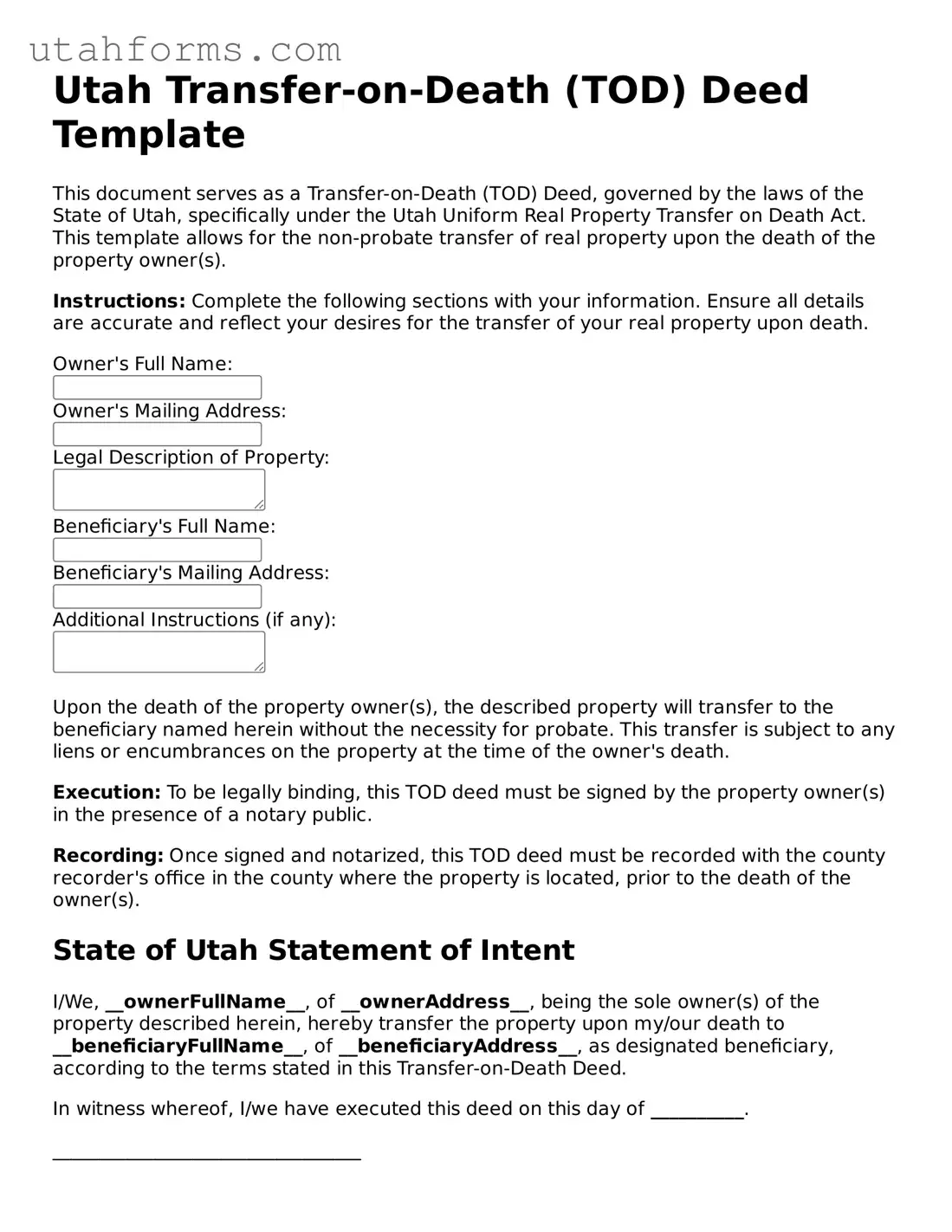Utah Transfer-on-Death (TOD) Deed Template
This document serves as a Transfer-on-Death (TOD) Deed, governed by the laws of the State of Utah, specifically under the Utah Uniform Real Property Transfer on Death Act. This template allows for the non-probate transfer of real property upon the death of the property owner(s).
Instructions: Complete the following sections with your information. Ensure all details are accurate and reflect your desires for the transfer of your real property upon death.
Upon the death of the property owner(s), the described property will transfer to the beneficiary named herein without the necessity for probate. This transfer is subject to any liens or encumbrances on the property at the time of the owner's death.
Execution: To be legally binding, this TOD deed must be signed by the property owner(s) in the presence of a notary public.
Recording: Once signed and notarized, this TOD deed must be recorded with the county recorder's office in the county where the property is located, prior to the death of the owner(s).
State of Utah Statement of Intent
I/We, __ownerFullName__, of __ownerAddress__, being the sole owner(s) of the property described herein, hereby transfer the property upon my/our death to __beneficiaryFullName__, of __beneficiaryAddress__, as designated beneficiary, according to the terms stated in this Transfer-on-Death Deed.
In witness whereof, I/we have executed this deed on this day of __________.
_________________________________
Signature of Owner(s)
This document was acknowledged before me on __________ by __ownerFullName__.
_________________________________
Notary Public
My Commission Expires: __________
